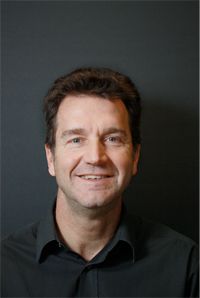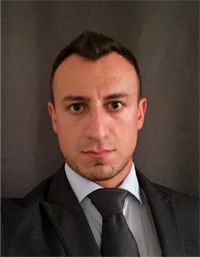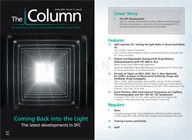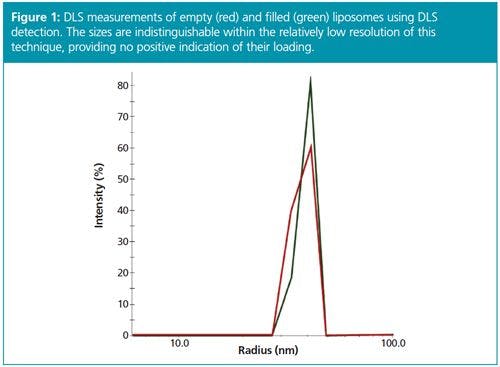The SFC Renaissance?
The Column
Jean-Luc Veuthey and Alexandre Grand-Guillaume-Perrenoud reveal the latest developments in supercritical fluid chromatography (SFC) that are bringing the technique back to the limelight.
Photo Credit: by_Desmondpml/Getty Images

Jean-Luc Veuthey and Alexandre Grand-Guillaume-Perrenoud reveal the latest developments in supercritical fluid chromatography (SFC) that are bringing the technique back to the limelight.
Q. There has been renewed interest in supercritical fluid chromatography (SFC) in recent years. How has SFC evolved and has it tackled some of the problems associated with it in the past?
Jean-Luc Veuthey: In the 1980s, many research groups used home-made SFC apparatus assembled from capillary gas chromatography (GC) and packed liquid chromatography (LC) systems. The pharmaceutical industry was therefore reluctant to apply SFC methods published in the literature in practice because the equipment was not robust and highly specialized technical expertise was required to perform the analysis. The sample injection was also complicated, the cooling temperature could often not be sufficiently regulated, and the detector sensitivity was not sufficient for biological applications.
In addition, the validation process was complicated compared with LC and GC, which further limited the implementation of SFC in a quality control (QC) environment. The introduction of new SFC systems from 2010, commercialized by different manufacturers and providing chromatographic performance identical to high performance liquid chromatography (HPLC) and ultrahigh-pressure liquid chromatography (UHPLC) apparatus, have addressed these issues. Of course, there is still room for some improvements, notably in terms of system external volume contribution, which restricts the use of narrow-bore columns to perform fast separation as well as restricting the pressure capabilities of the pumps to increase the peak capacity with long columns.
Furthermore, there is a need for more papers to be published in the literature presenting validated data with real applications to convince the industry to use this technique at the level of GC and LC methods.
Q. You recently published a paper comparing UHPSFC (SFC performed on columns packed with sub-2 µm particles) to UHPLC for the analysis of pharmaceutical compounds.1 Could you talk a little about this research? What can SFC offer that UHPLC cannot?
Alexandre Grand-Guillaume-Perrenoud: This particular paper reported a comparative evaluation of performance and limitations of modern SFC with state-of-the-art UHPLC. The main goal was to first have a rough idea of the competitiveness of SFC, supported by a new generation of dedicated instruments and columns, with the gold standard technique used nowadays in pharmaceutical analysis. In that context, the systematic assessment of both kinetic performance and separation selectivity aspects was of prime interest for us.
On the first aspect, van Deemter curves showed that SFC was able to reach very similar column efficiencies to those obtained for UHPLC conditions. Lower mobile phase viscosity and preserved efficiency at very high linear velocity observed in SFC were fully able to compensate for the limited pumping pressure capability of the SFC system tested (414 bar). Hence, SFC was proven to allow for both high-throughput and high-resolution analyses with UHPLC-comparable performance. As shown in the paper, analysis in less than 1 min could be easily performed, and a peak capacity over 250 could be attained in approximately 40 min when using suitable mobile phase flow rates, column lengths, and gradient time conditions. On the hardware point of view, and in spite of the previously mentioned system pressure limits, those first basic experiments also demonstrated that the new generation of SFC instruments was able to support state-of-the-art columns packed with sub-2-µm particles. The latter association of technologies, initiated by T. Berger in 2010,2 finally giving birth to the ultrahigh-performance SFC (UHPSFC) technique suggested by D. Sarazin in 2011.3
In my opinion, the real advantage of UHPSFC is the selectivity aspect. The direct compatibility of SFC mobile phase with a wide spectrum of stationary phase chemistries including polar, non-polar, aromatic, and mixed mode triggers almost infinite possibilities to play with selectivity. This has the potential to make SFC more versatile than UHPLC (in reversed-phase LC and HILIC modes) or, at least, to make it a valuable alternative. The simple example reported in the paper dealing with eight pharmaceutical compounds separated, on the one hand, on four diverse reversed-phase column chemistries in liquid conditions and, on the other hand, on four different UHPSFC-dedicated columns already illustrated the higher degree of selectivity modulations that can be achieved in supercritical conditions.1 Investigations into SFC retention mechanisms, such as those currently lead by West and Lesellier, are vitally important to better define the selectivity power of SFC.4,5,6
Q. What other applications demonstrate the practical benefits of SFC in pharmaceutical analysis?
AGGP: SFC is valuable for any application where fine selectivity is required. For example, the technique has been successfully used for drug impurity profiling.7,8,9,10 SFC is known to be beneficial and is commonly used for chiral separations. For more than 20 years, SFC has been shown to be faster and greener than normal-phase LC for an equivalent successful enantio-separation.11 Tighter environmental policy towards the use of toxic solvents may definitively establish SFC as the first choice technique for chiral separation. SFC is also being investigated as an alternative approach to complement or replace other LC modes that are regarded as less sustainable, such as HILIC or non-aqueous reversed-phase LC for the analysis of pharmaceuticals with more extreme polarities. The growing interest in SFC by regulatory authorities should extend the application areas in pharmaceutical analysis in the near future.
Q. Are there other novel applications - outside pharmaceutical analysis - that illustrate the benefits of SFC compared to traditional approaches?
JLV: Several other areas could use SFC as a complementary tool. For example, in forensic science and anti-doping laboratories, SFC could be a valuable method to confirm the presence or absence of a compound in a biological matrix as well as for performing a quantitative analysis. In these areas, it is actually important to use two methods with different separation mechanisms and SFC is easier to perform than GC as a complementary LC technique for the tested compounds. Of course, the same is true in food and beverage analysis as well as in cosmetics. Finally, the interest of SFC in petrochemical and environmental analysis has already been largely demonstrated.12,13,14
Q. SFC is also being used for preparative chromatography. What are the advantages of SFC here?
JLV: For a long time, SFC has been recognized as a preparative technique instead of an analytical tool, especially in the pharmaceutical industry. The major advantage of SFC is the replacement of a large consumption of toxic and expensive organic solvents with carbon dioxide. Furthermore, because carbon dioxide is volatile under atmospheric conditions, it is easy to obtain concentrated fractions, which reduces the sample handling and, consequently, the cost of the process.
Finally, it is also a great advantage to use the same conditions for performing preparative and analytical separations. In our laboratory, we do not develop this kind of approach, but readers further interested in that topic may find fine applications in the work of Eric Francotte in Novartis (Basel)15 and Christopher Welch in Merck (Rahway, NJ).16
Q. What other projects are you working on using SFC?
AGGP: We are constantly trying to extend our understanding of SFC in both the fundamental and applicative aspects. Amongst current projects, we are gathering retention data for a large number of compounds scattered over an extended chemical space. The goal is to define the limits of SFC and if possible to help the community to go one step further towards the establishment of reliable retention models. We are also exploring different hyphenation possibilities with an emphasis on multidimensionality. On the application side, our goal is to provide relevant examples that illustrate the added value of using SFC as a complementary tool to other separation techniques. We are currently investigating the analytical potential of SFC and SFC–MS for biological matrices and also for metabolomics applications.
References
1. A. Grand-Guillaume Perrenoud, J.-L. Veuthey, and D. Guillarme, Journal of Chromatography A1266, 158–167 (2012).
2. T.A. Berger, Chromatographia72, 597–602 (2010).
3. C. Sarazin, D. Thiebaut, P. Sassiat, and J. Vial, J. Sep. Sci.34, 2773–2778 (2011).
4. C. West and E. Lesellier, J. Chromatogr. A1191, 21–39 (2008).
5. E. Lesellier, J. Chromatogr. A1216, 1881–1890 (2009).
6. C. West, E. Lemasson, S. Bertin, P. Hennig, and E. Lesellier, Journal of Chromatography A1440, 212–228 (2016).
7. E. Lemasson, S. Bertin, P. Hennig, H. Boiteux, E. Lesellier, and C. West, Journal of Chromatography A1408, 217–226 (2015).
8. E. Lemasson, S. Bertin, P. Hennig, H. Boiteux, E. Lesellier, and C. West, Journal of Chromatography A1408, 227–235 (2015).
9. C. Galea, D. Mangelings, and Y. Vander Heyden, Journal of Pharmaceutical and Biomedical Analysis111, 333–343 (2015).
10 A.J. Alexander, T.F. Hooker, and F.P. Tomasella, Journal of Pharmaceutical and Biomedical Analysis70, 77–86 (2012).
11. N. Matthijs, M. Maftouh, and Y. Vander Heyden, J. Sep. Sci.29, 1353–1362 (2006).
12. D. Thiébaut, J. Chromatogra. A1252, 177–188 (2012).
13. F. Adam, D. Thiébaut, F. Bertoncini, M. Courtiade, and M.-C. Hennion, J. Chromatogr. A 1217, 1386–1394 (2010).
14. L. Miller and M. Potter, J. Chromatogr., B: Anal. Technol. Biomed. Life Sci.875, 230–236 (2008).
15. E.R. Francotte, J. Chromatogr. A906, 379–397 (2001).
16. C.J. Welch, W.R. Leonard, Jr., J.O. DaSilva, M. Biba, J. Albaneze-Walker, D.W. Henderson, B. Laing, and D.J. Mathre, LCGC Europe18(5), 264–266, 270, 272 (2005).

Jean-Luc Veuthey is a full professor at the School of Pharmaceutical Sciences, University of Geneva, Switzerland. His research domain is dedicated to the development of separation techniques in pharmaceutical sciences for the analysis of drugs and drugs of abuse in different biological matrices. He is also interested in doping control analysis and is a member of the UEFA Anti-Doping Panel since 2005. Jean-Luc Veuthey is author of more than 300 scientific publications and book chapters. He is also active in different both national and international scientific committees.

Alexandre Grand-Guillaume-Perrenoud holds a master degree in biochemistry (University of Fribourg, Switzerland) and a Federal Diploma of Pharmacist (University of Geneva, Switzerland). He recently obtained a PhD degree in pharmaceutical sciences (University of Geneva, Switzerland) for his thesis work focused on SFC and new perspectives in pharmaceutical analysis under the direction of Prof. Jean-Luc Veuthey and Dr. Davy Guillarme. He is now a post-doc fellow at the Nestlé Institute of Health Sciences (Federal polytechnical school of Lausanne, Switzerland). His domain of expertise includes small molecules analysis using SFC and different LC approaches hyphenated to mass spectrometry (MS).

New TRC Facility Accelerates Innovation and Delivery
April 25th 2025We’ve expanded our capabilities with a state-of-the-art, 200,000 sq ft TRC facility in Toronto, completed in 2024 and staffed by over 100 PhD- and MSc-level scientists. This investment enables the development of more innovative compounds, a broader catalogue and custom offering, and streamlined operations for faster delivery. • Our extensive range of over 100,000 high-quality research chemicals—including APIs, metabolites, and impurities in both native and stable isotope-labelled forms—provides essential tools for uncovering molecular disease mechanisms and exploring new opportunities for therapeutic intervention.
New Guide: Characterising Impurity Standards – What Defines “Good Enough?”
April 25th 2025Impurity reference standards (IRSs) are essential for accurately identifying and quantifying impurities in pharmaceutical development and manufacturing. Yet, with limited regulatory guidance on how much characterisation is truly required for different applications, selecting the right standard can be challenging. To help, LGC has developed a new interactive multimedia guide, packed with expert insights to support your decision-making and give you greater confidence when choosing the right IRS for your specific needs.

.png&w=3840&q=75)

.png&w=3840&q=75)



.png&w=3840&q=75)



.png&w=3840&q=75)











